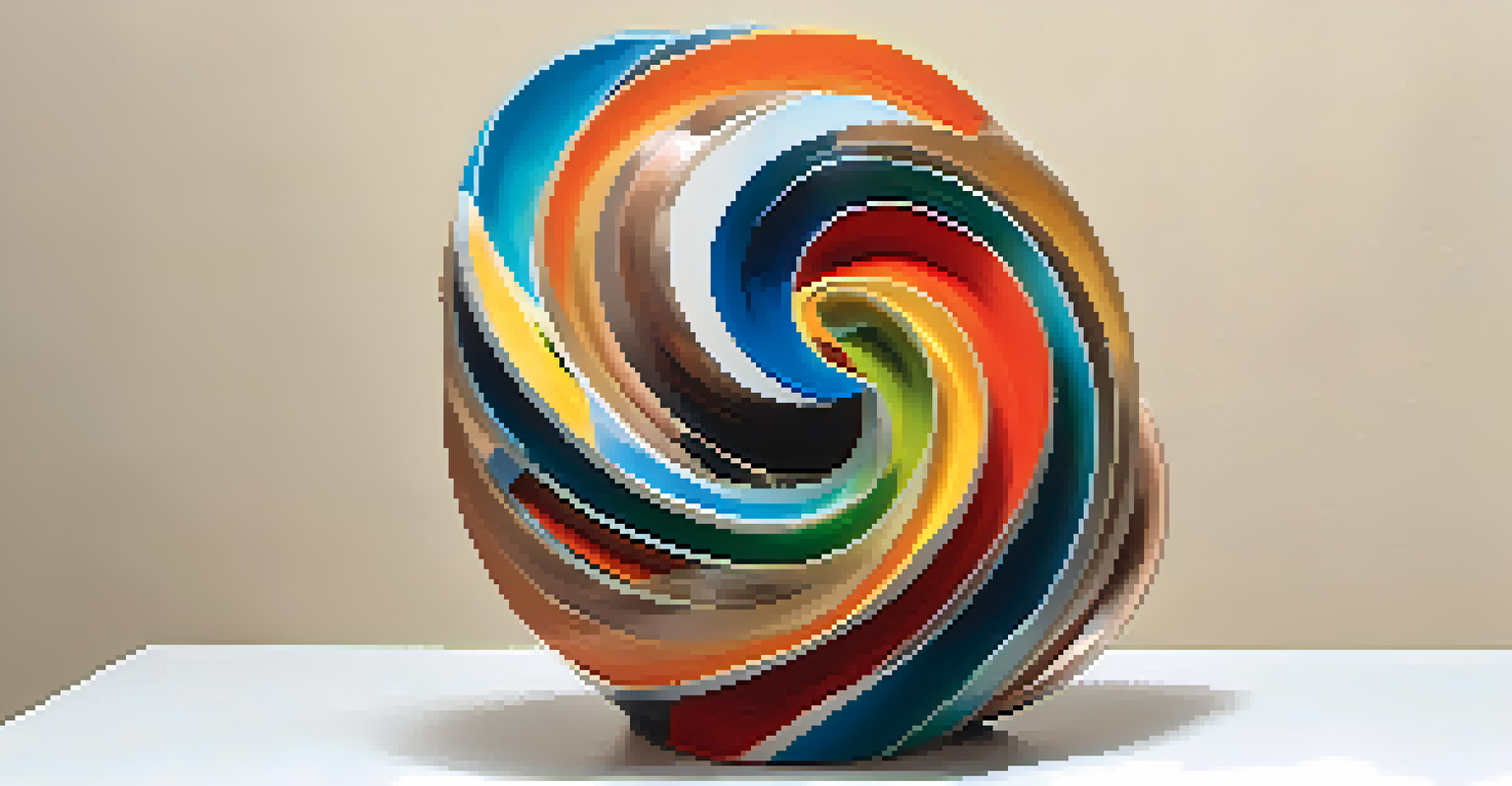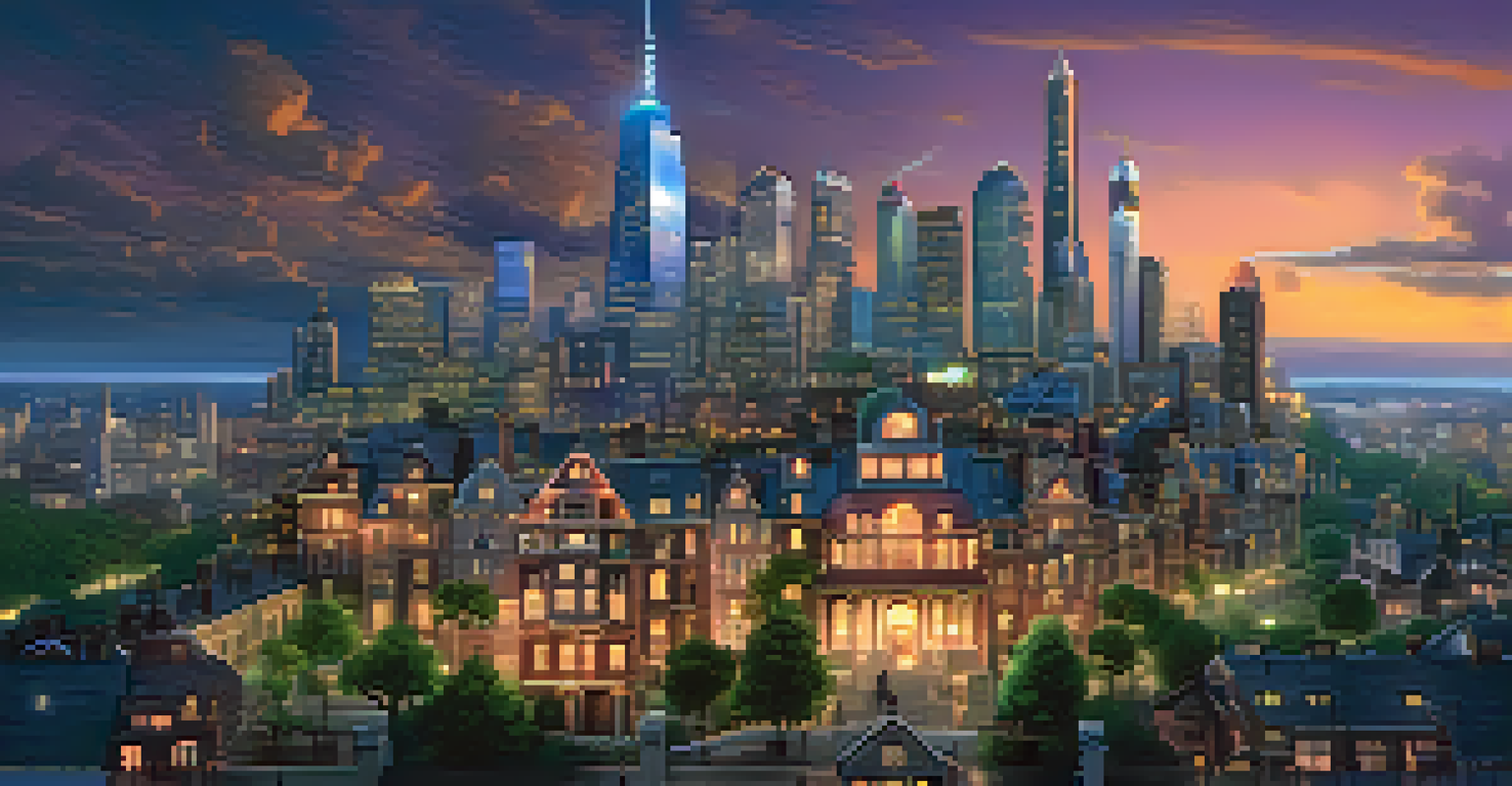The Intersection of Memory and Imagination in Artistic Creation

Understanding Memory in the Context of Art
Memory is a powerful tool that artists often draw upon to create their work. It allows them to revisit past experiences, emotions, and sensations, which can be translated into their creations. For example, a painter might recall a childhood summer spent in a sunlit field and use those vivid images to inspire a vibrant landscape.
Memory is the treasure house of the mind wherein the monuments thereof are kept and preserved.
Moreover, memory is not just a static repository of past events; it's dynamic and can change over time. This malleability means that artists can reinterpret their memories, adding layers of meaning to their work. Think of how a musician might compose a piece based on a nostalgic moment, only to find that the emotional resonance shifts with new experiences.
Ultimately, memory acts as a canvas upon which imagination can paint, providing both the raw material and the emotional depth that enriches artistic expression.
The Role of Imagination in Artistic Innovation
Imagination is the spark that ignites artistic creation, allowing artists to transcend the boundaries of reality. It enables them to envision worlds that don’t yet exist, or to reinterpret existing realities in unique ways. For instance, a writer might take the mundane elements of everyday life and weave them into a fantastical narrative, drawing readers into a realm of possibilities.

This ability to imagine is often fueled by memory; artists blend their recollections with creative visions to produce something entirely new. Consider a sculptor who recalls a childhood toy and uses that memory as a launching pad for an abstract piece, transforming a simple shape into a statement about nostalgia and growth.
Memory Fuels Artistic Expression
Artists utilize memory to evoke past experiences and emotions, enriching their work with personal significance.
Thus, imagination serves as a bridge between what was and what could be, pushing the boundaries of artistic expression and inviting audiences to explore new perspectives.
The Synergy of Memory and Imagination
When memory and imagination work together, they create a powerful synergy that can lead to profound artistic experiences. Artists often find that their memories inspire imaginative leaps, while their fantasies can reshape how they remember the past. This interplay can lead to innovative works that resonate deeply with audiences.
Imagination is the only weapon in the war against reality.
For instance, a filmmaker might draw on personal memories of loss and weave them into a fictional narrative, enriching the story with emotional authenticity. This blend can create a film that feels both familiar and extraordinary, allowing viewers to connect on multiple levels.
In this way, the fusion of memory and imagination not only enhances the creative process but also deepens the impact of the art itself, inviting audiences to embark on a journey through both the artist's past and their own.
Art as a Reflection of Personal and Collective Memory
Art often serves as a mirror, reflecting both personal and collective memories. Artists tap into their individual experiences while also drawing on shared cultural narratives, creating works that resonate with a wider audience. For example, a mural may depict a community's history, allowing viewers to see their own stories within the artwork.
This reflection can foster a sense of connection and understanding among people, as they recognize the shared experiences that shape their identities. Consider how a song about a significant historical event can evoke memories for listeners who lived through it, while also educating those who did not.
Imagination Transforms Reality
The interplay of memory and imagination allows artists to create innovative narratives that transcend everyday life.
Ultimately, art becomes a vehicle for collective memory, bridging the gap between the personal and the communal, and inviting dialogue about our shared histories.
The Emotional Landscape of Memory and Imagination
Emotions play a crucial role in both memory and imagination, influencing how artists create and how audiences connect with their work. Memories are often tied to specific feelings, and these emotions can infuse artistic creations with authenticity. A poet might write about a heart-wrenching breakup, drawing upon their own pain to evoke empathy in readers.
Similarly, the imaginative process allows artists to explore emotions in new ways, transforming pain into beauty or joy into contemplation. An abstract painter might use color and form to express feelings that are difficult to articulate, inviting viewers to interpret the work through their own emotional lens.
Through this emotional landscape, art becomes a powerful medium for both personal expression and shared experience, deepening our understanding of the human condition.
Challenges in Balancing Memory and Imagination
While the interplay of memory and imagination can yield captivating art, it also presents challenges for artists. Striking the right balance between recalling the past and envisioning the future can be difficult. An artist may struggle to stay true to their memories while also allowing their imagination to reshape those experiences in innovative ways.
Moreover, the nostalgia associated with memory can sometimes hinder creativity, trapping artists in a cycle of longing for the past instead of embracing new ideas. A writer might find themselves fixated on a beloved character from a previous story, preventing them from developing new narratives.
Art Reflects Shared Histories
Art serves as a medium for both personal and collective memory, fostering connections among individuals through shared experiences.
Navigating these challenges requires self-awareness and a willingness to experiment, encouraging artists to embrace both their memories and their imaginative impulses as they create.
The Impact of Technology on Memory and Imagination in Art
In our digital age, technology significantly influences how memory and imagination intersect in the artistic process. Artists now have access to tools that can enhance their ability to recall memories or visualize imaginative concepts. For example, digital software allows a graphic designer to manipulate images, blending real memories with imaginative elements seamlessly.
However, technology also presents the risk of superficiality, where the depth of memory may be overshadowed by the ease of digital creation. An artist might find themselves relying too heavily on stock images or filters, losing the personal touch that comes from genuine recollections and imaginative thought.

Ultimately, technology can be a powerful ally in the artistic journey, but it’s essential for artists to remain grounded in their own experiences and maintain the authenticity that makes their work resonate.